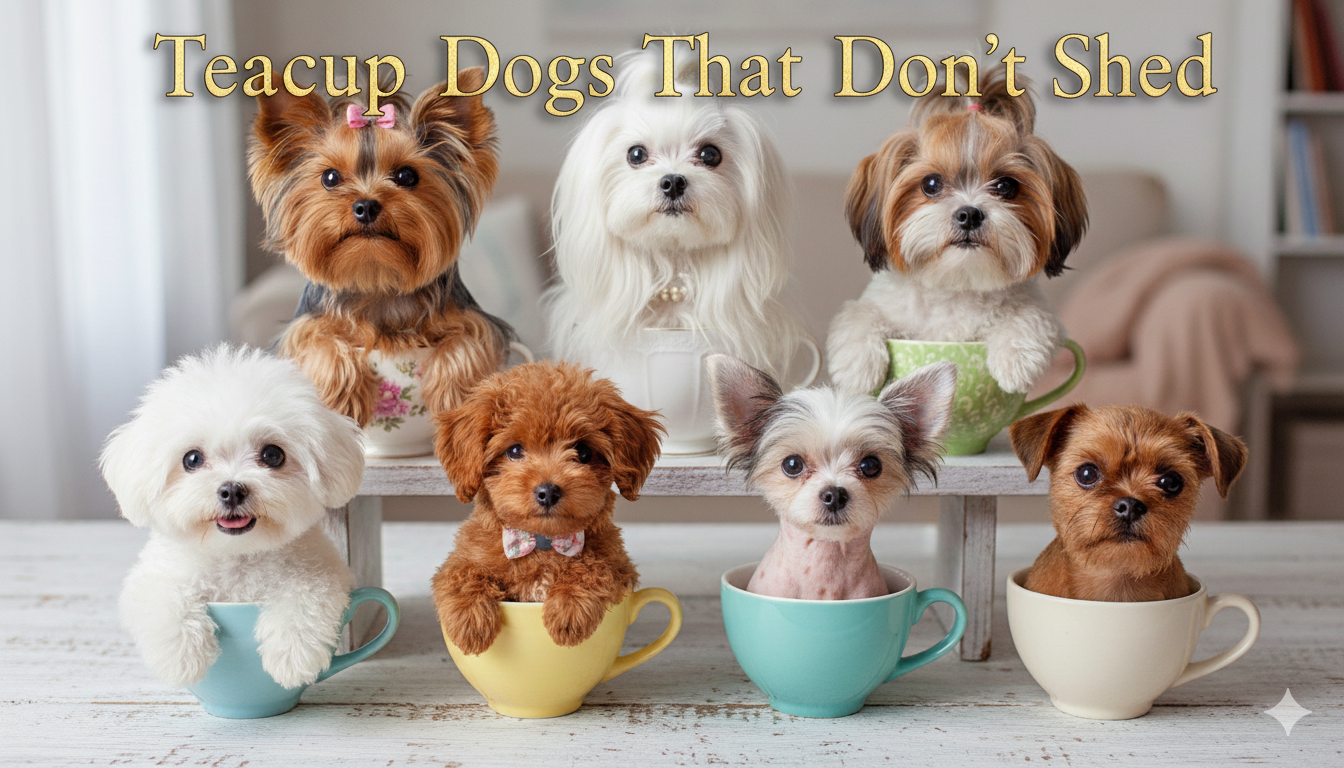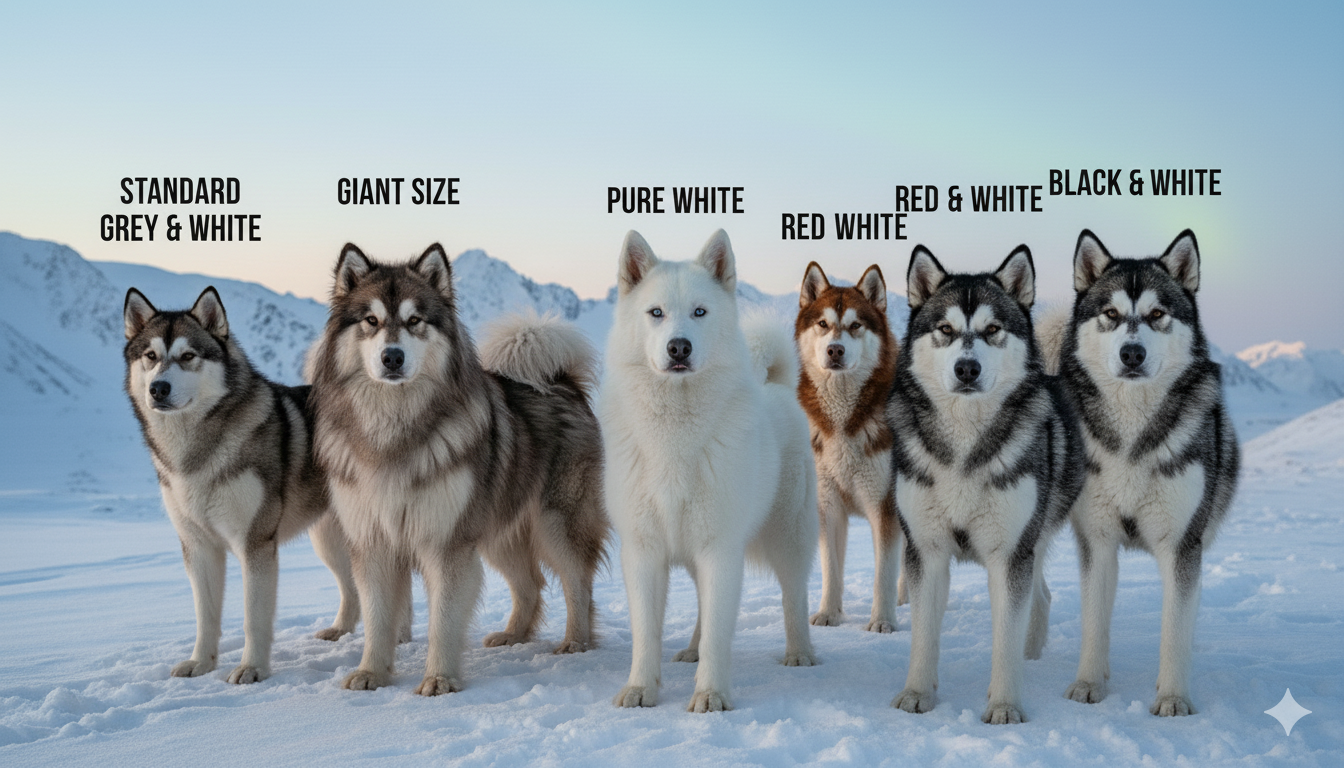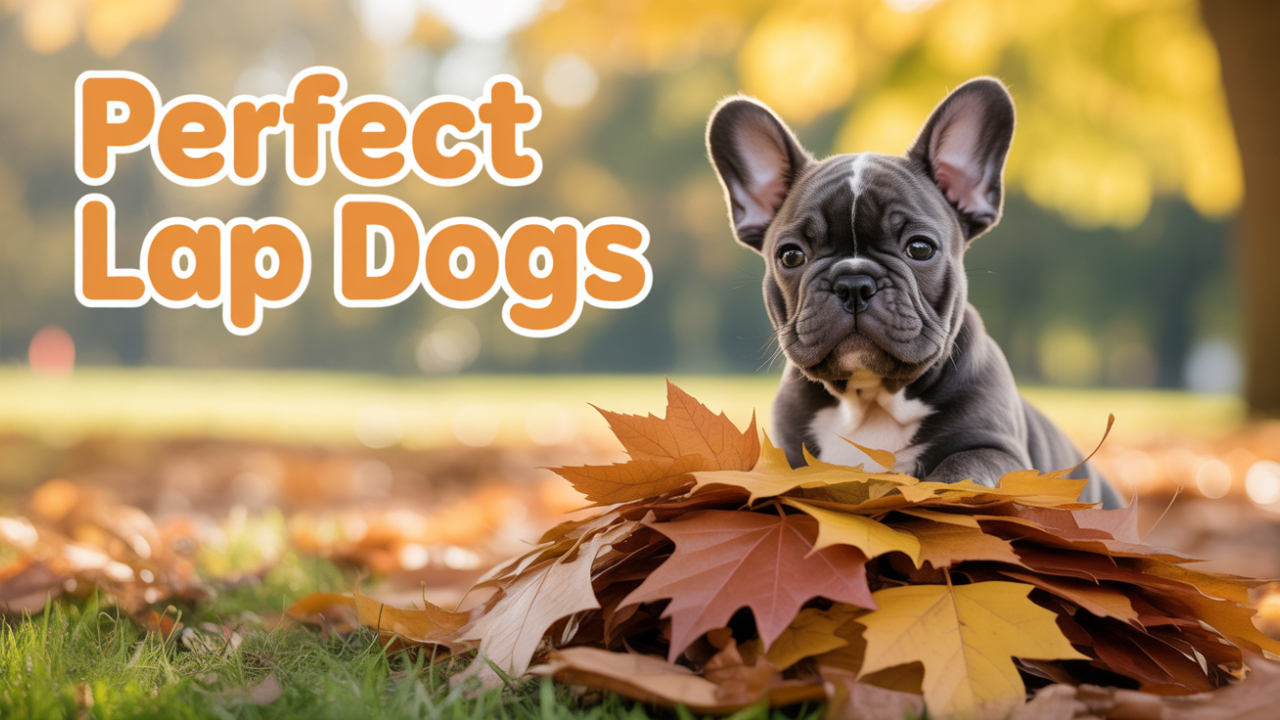Lap dogs are small dog breeds that enjoy being close to their owners, often resting on their laps. These lap dogs are great little friends and are very easy-going, making them the perfect pets for city living or compact spaces. Breeds such as the Chihuahua, Pomeranian, and Cavalier King Charles Spaniel are classic examples of lap dogs, each with their own characteristics and charm. Their compactness makes them easy to handle and their devotion leads to deep connections with their owners. Understanding the characteristics and care needs of lap dogs can enhance the experience of having one as a pet. This blog will explore the various lap dog breeds, care tips, and the happiness of having a lap dog.
The Lap Dog Defined

Lap dogs are petite, loving breeds that depend on people being nearby. These are dogs that can be held in the lap of the owner. Chihuahuas and Pomeranians are the poster children of the lap dog world. A brief history of lap dogs mirrors their transformation from regal status symbols to beloved household companions.
Historical Purpose
The history of lap dogs dates all the way back to antiquity, where diminutive breeds were considered a sign of prestige amongst royalty. Take, for example, the Sleeve Pekingese, which was transported in slouchy sleeves of robes worn by the Imperial Household in ancient China. Breeds such as the Cavalier King Charles Spaniel and Pekingese were popular amongst emperors and nobles, bred for size and temperament to fit the lifestyles of their owners. As society changed, lap dogs went from the sole province of royalty to the family pet, a testament to their timeless charm.
Modern Companion
Lap dogs play critical roles in our society now as emotional support animals. Their miniature stature means they fit anywhere, even the smallest apartment or home. They help eliminate loneliness and enrich their owners’ lives, frequently becoming empathically attached. Their soft disposition has resulted in them becoming sought-after therapy dogs, as they can offer comfort and companionship to those in need.
Temperament Traits
It’s the loving, devoted disposition of lap dogs that makes them perfect pets. They’re usually quite playful and entertaining around the house. These dogs are incredibly adaptive and can fit into both energetic and more relaxed families. They typically become very attached to their owners, trailing you through the house like a lap dog, which makes the companionship even greater. Although others, such as Chihuahuas, may necessitate suitable training to curb undesired defensive aggression, their affectionate disposition typically peeks through.
Top 10 Lap Dogs

Lap dogs tend to be small, sweet, and flexible when it comes to living arrangements. These breeds live for company, which makes them perfect companions for many different families and individuals. They may have been considered everything from a prince to a pauper, but each one of them holds a special place in the hearts of their owners.
1. Cavalier King Charles Spaniel

The Cavalier King Charles Spaniel is famous for its loving nature and docile temperament. They relish moderate exercise, so they do well with couch-potato owners. Their gorgeous silky coat requires frequent grooming to avoid mats, and they are amazing with kids and other pets, which adds to their desirability as family dogs.
2. Bichon Frise

Bichon Frises are happy, playful dogs with a fluffy, hypoallergenic coat. This trait makes them a good choice for allergy sufferers. Frequent grooming is a must to maintain their coat’s appearance. Their sociable temperament makes them fantastic buddies for families and singles alike.
3. Shih Tzu

With their adorable temperament and noble countenance, Shih Tzus are essentially miniature lions. They have moderate exercise requirements, which means an ample amount of indoor play and short walks. Their long, flowing coat necessitates regular grooming to prevent matting. Their loving nature turns them into devoted lap dogs.
4. Maltese

The Maltese is pint-sized with the heart of a lion and a puppy-like spirit. They have long, silky white fur that needs daily grooming. They are renowned lap dogs and are excellent cuddlers. Their flexibility means they can flourish in any environment, from city apartments to spacious homes.
5. Pug
Pugs have their wrinkled faces and curled tails. They are playful and sociable, which makes them fantastic family companions. Their minimal activity needs coincide beautifully with apartment living. Pugs are one of the most affectionate breeds, eager for cuddle time with their owners.
6. Italian Greyhound
Italian Greyhound – a lap dog with style and speed. They’re very attached to their owners and need only modest exercise, preferring sprints to marathons. Their versatility translates well to indoor living, which is great for smaller spaces.
7. Havanese
Havanese dogs are affectionate and extroverted, meaning they make great family companions. Their hypoallergenic coat is prone to tangling and needs frequent grooming. Their puppy playfulness brings out the play in their owners. They do well in everything from an apartment to a large house!
8. Japanese Chin
Japanese Chins are delightful, graceful and have a fun-loving nature. All of them have low exercise requirements, so they’re great for laid back owners. They require regular grooming to keep up their beautiful coat. They love to cuddle up with their owners.
9. Toy Poodle
Toy Poodles are extremely intelligent and easy to train. Their hypoallergenic coat is great for allergy sufferers. They’re playful and energetic, so they need regular playtime and mental stimulation. Suitable for apartment or home life, they flourish in either.
10. Papillon
The Papillon is an adorable small breed with butterfly ears. Their amiable disposition makes for wonderful companions. They have mild exercise requirements and like play and short walks. Their intelligence often helps them do well in training and dog sports.
Beyond The Cuddles

Lap dogs may be prized for their affection and small stature. Their advantages go well beyond the cuddles. These little guys aren’t just cute; they actually contribute to your mental health as well. A lap dog is especially comforting regardless of your lifestyle and living situation.
Emotional Support
Lap dogs are wonderful emotional support pets. They’re like little furry nurses who innately know when their human needs a hug. Their wonderful snuggly demeanor can bring your spirits up during difficult times. Take a Pug, for example, which is one of the most loving dog breeds. It can detect when his owner is feeling low and cuddle up to offer solace. This skill in reading human emotions helps form a close bond and alleviates loneliness, even for those who live by themselves. There’s a special kind of therapy that comes with having a lap dog too. Their ever presence is comforting and grounding.
Stress Reduction
According to research, cuddling lap dogs reduces stress. We all know that petting a dog can make you feel relaxed. Research shows that oxytocin, a bonding hormone that reduces stress, is released during the act. A Bichon Frise, for instance, isn’t high maintenance about much but does require grooming on a regular basis, which can double as a zen ritual for both dog and owner. All the healing that comes with having a lap dog and the joy they bring to your mental health. A Japanese Chin may elicit a smile with its musical ‘singing’ when stimulated, adding to the cheerful chaos in the household.
Urban Living
Lap dogs are especially great for city living. They need less exercise space and can do well in apartments, which makes them perfect for city dwellers. Breeds such as the Dachshund and Italian Greyhound are uniquely suited to this type of lifestyle and can flourish amidst your city bustle. They’re small enough that owners can bring them anywhere – a cafe, a park. While their sweet disposition lends itself to families, a little caution should be exercised during play to avoid injuries, particularly in more delicate breeds.
Unique Care Needs
Lap dogs, who you might love for their snuggly demeanor and diminutive stature, actually have their own unique care needs that owners need to know about to keep them healthy and happy. Addressing these needs requires a considerate strategy of nutrition, physical activity, hygiene, and medical attention.
Diet
Lap dogs need a premium diet. Their petite little bodies need nutritionally dense fare to do well. By choosing a food designed for small breeds, you can ensure they have the optimal ratio of protein, fat, and carbs. Portion control is another key factor, as overfeeding can cause obesity, which is prevalent in smaller dogs.
Adding some fresh fruits and vegetables into their diet will improve it by providing important vitamins and minerals. Particularly unique care needs, blueberries, carrots, and green beans are all awesome treats. 2) Work With Your Vet For Unique Care Needs—If you haven’t consulted your local vet about your dog’s diet, you are missing out on a wealth of information.
Exercise
Daily exercise is crucial to lap dog health — physically and mentally. Shorter walks, like 15 to 30 minutes, are enough for most little breeds — combined with playtime inside. If your dog needs to burn energy, fetch or tug-of-war can rate an indoor workout.
Mental stimulation is not to be neglected. Interactive toys and games help stave off boredom. They’re at risk of inactivity, which has obvious health complications like obesity and behavioral consequences like anxiety or destruction. Striking a balance between body and mind exercise is key to a well-rounded routine.
Grooming
Lap dog breeds have different grooming requirements. Routine brushing is critical to coat health and prevents matting and excess shedding. Longer-haired breeds, such as Shih Tzus or Yorkies, might require more frequent visits.
Regular professional grooming can assist in keeping them looking and smelling their best, particularly for those with particular coat types. Dental care and nail trimming are important parts of their grooming. Simple things like brushing teeth and keeping fingernails short make a world of difference in their happiness.
Health
Lap dogs are prone to specific health concerns such as dental problems and weight gain. Routine vet visits are a must to keep an eye on their health and catch problems early. Preventative care such as vaccinations keeps them safe from common diseases.
Spaying or neutering can limit the occurrence of some health issues that result in a longer, healthier life. Being proactive about their care needs is important to their health and helps them live fulfilling, happy lives.
Choosing Your Companion
Selecting the right lap dog involves careful consideration of various factors that align with your lifestyle, family dynamics, and ethical sourcing practices. It helps guarantee that you and your potential pet can flourish together.
Lifestyle Match
About: Selecting your lap dog Various breeds have different levels of activity and requirements. For example, if you work 12 hours a day, then one of the lays-around-the-house-and-chill-out breeds, such as a Cavalier King Charles Spaniel, would be a good choice. On the flip side, if you’re an active type, a firecracker of a breed such as a Pug may fit right into your lifestyle.
Your living arrangement is a major factor. If you live in a small apartment, focus on smaller breeds that take up less space, like the Chihuahua or the French Bulldog. Families with outdoor access may do better with larger breeds who still like a cuddle but can take a little exercise.
Select a dog that fits comfortably within your lifestyle and you both will enjoy a more satisfying experience. The selection of a dog that suits your energy and lifestyle will make him or her feel like an extension of your family. It will make you feel complete.
Family Dynamics
Family dynamics come into play here. It’s important to consider your entire family, kids and other animals included, when choosing your lap dog. Breeds such as the Beagle and the Boston Terrier are lauded for their kid-friendly disposition, making them fantastic family pets.
To pick a dog that’s going to be able to adjust to your family’s energy level. For example, if you have a rowdy household, a playful breed can keep pace, whereas a more relaxed breed may be the best fit for peaceful homes. Get your family involved in this decision to make sure everyone is on board and excited about your new family member.
Ethical Sourcing
Rescue or shelter adoptions are a great way to give a lap dog a second chance. This decreases the homeless animal population and provides you with a loving companion who’s looking for a new home.
In choosing breeders, look for those who emphasize health and personality. Good breeders will be forthcoming about their practices and will have health clearances for their dogs. It’s really important to stay away from puppy mills and immoral breeders because that can cause health issues for your new friend.
Know what you’re getting into with a pet. A lap dog is going to need time, attention, and love, so be prepared.
Common Misconceptions
Lap dogs generally get a bad rap because they tend to be small and seem fragile. Here we’re going to clear up some common misconceptions about these breeds, especially in terms of their power, family friendliness, and variety within their ranks.
- Strength and Resilience: One prevalent misconception is that lap dogs lack strength and resilience simply because of their size. As it turns out, a lot of lap dogs are actually beasts of burden. For example, the Dachshund, while having an elongated body and stunted legs, was developed as a hunting dog and had great stamina. Likewise, the Jack Russell Terrier, small but bursting with energy and athletic, can romp hard. These breeds prove that, though small in stature, lap dogs can be quite scrappy.
- Suitability for Active Families: Another common belief is that lap dogs are not suitable for active families. This myth often arises from the assumption that smaller breeds need less exercise. A lot of lap dog breeds do well in active homes. Take the Beagle, for instance, a lap dog who loves to be outdoors and needs consistent exercise. The Cavalier King Charles is a very playful dog and I’d say it’s a great fit for a family who likes to stay active as well. It’s equally important to pair the dog’s energy level with your family’s lifestyle, as most lap dogs can survive in either a laid-back or high-energy home.
- Diversity of Breeds: A final misconception lies in the idea that all lap dogs are the same in terms of personality and energy levels. In reality, lap dogs are a wide category of various breeds, each with different characteristics. For example, the Shih Tzu is placid and the Chihuahua can be feisty. This variety allows families to select a lap dog that fits their lifestyle, guaranteeing a perfect match.
Conclusion
Search for the best lap dogs. Each breed has its delight and power. Understanding their needs can help you provide the best care. Lap dogs live on love and attention. We consider them part of the family. If you know what the myths are, you’ll have a better chance to do it right!
When you pick a lap dog, you pick a lifetime friend. Celebrate their quirks and lap-dog it up! Do your research on lap dogs. With the right knowledge, you can build a joyful haven for your furry friend. Begin your adventure now and experience the love these little lap dogs can deliver.
Frequently Asked Questions
What is a lap dog?
Lap dogs lap dogs
What are the benefits of owning a lap dog?
Lap dogs provide companionship, alleviate stress, and typically need less exercise than their larger counterparts. They’re ideal for apartments and can be suitable for couples with families or singles.
How do I choose the right lap dog for me?
Think about your lifestyle, living space, allergies, and so on. Research breeds to identify one that complements your lifestyle and personality.
Do lap dogs need special care?
That’s right, lap dogs might require some extra care, such as grooming, dental care, and maintaining their weight. Their diminutive stature makes them more vulnerable to specific health problems.
Are lap dogs good with children?
Most lap dogs are mild and tender hearted, therefore they are wonderful playmates for kids. Closely monitor all play interactions for the security of both the dog and the child.
What are common misconceptions about lap dogs?
Others believe lap dogs aren’t good watchdogs or are lazy. Actually, many of them are alert, playful, and devoted.
How can I train my lap dog effectively?
Start young and use positive reinforcement. Reward and praise to reinforce good behavior. Make training sessions brief and enjoyable to hold their attention.





